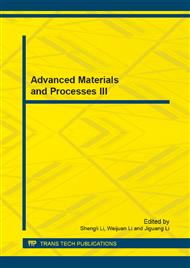p.654
p.658
p.662
p.667
p.672
p.678
p.686
p.691
p.699
Response Surface Optimization of Microwave-Assisted Extraction Conditions of Anthocyanins from Black Soybean Hull
Abstract:
Surface response optimization of microwave-assisted extraction (MAE) conditions of anthocyanins from black soybean hull with the factors of ethanol concentration, microwave power, extraction time, solid/liquid ratio (g:mL) on the yield of anthocyanin were studied. The results showed that ethanol concentration and ratio of liquid to solid had most important influence; the interaction of ethanol concentration and ratio of liquid to solid,interaction of microwave power and extraction time had significant influence on extraction anthocyanins from black soybean hull. The optimum extracting conditions of anthocyanin from black soybean hull were as follows: adding 1:40.00 (m:v) of 60.35% alcohol (pH2.0) and extracting for 74.26 s under the power of 237.86 W.
Info:
Periodical:
Pages:
672-677
Citation:
Online since:
September 2013
Authors:
Price:
Сopyright:
© 2013 Trans Tech Publications Ltd. All Rights Reserved
Share:
Citation:


